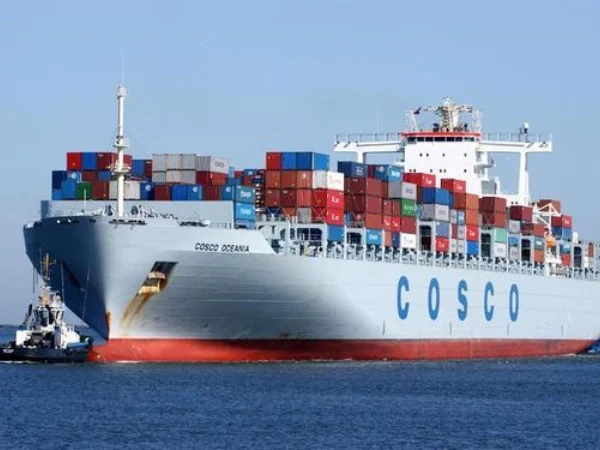Fabric markets play a crucial role in China’s textile industry. These markets serve as hubs for fabric manufacturers, suppliers, and retailers, facilitating the distribution of a wide range of fabric types. In this article, we will delve into the significance of these fabric markets, and provide an overview of China’s fabric industry.
Let’s start to talk about from:
- Knowing China’s Fabric Market
- Factors to Consider when Buying Fabric in Bulk
- Where to buy fabric in bulk
Knowing China’s Fabric Market
Historical Significance
The fabric market in China has a rich history that dates back centuries. It has evolved significantly over time, adapting to changing consumer demands and technological advancements. Historical milestones, such as the introduction of silk production during the Han Dynasty and the development of textile trade routes along the Silk Road, have greatly influenced the fabric industry.
Current State of China’s Fabric Market
- Size and Global Significance
China has emerged as a global leader in fabric production and supply. The country’s fabric market boasts a massive scale, catering to both domestic and international buyers. The volume of fabric production and the country’s export dominance highlight its global importance.
- Vastness and diversity of the fabric market
China’s fabric market is known for its vastness and diversity. It offers an extensive range of fabric types, including but not limited to cotton, silk, wool, linen, and synthetic fibers. These fabrics cater to various industries such as fashion, home textiles, automotive, and construction.

- Major Fabric Types and Production Regions
China’s fabric industry is known for producing a wide array of fabric types, each with its unique characteristics. From luxurious silk to durable denim, these fabrics are manufactured in different regions across the country.
- Wide range of fabric types produced in China: China’s fabric market caters to diverse demands with fabrics ranging from high-end luxury textiles to cost-effective materials for mass production.
- Key production regions and their specialties: Different regions in China specialize in the production of specific fabric types. For instance, Zhejiang Province is renowned for its silk production, while Shandong Province excels in cotton manufacturing.
- Market Trends and Innovations
China’s fabric market is dynamic and constantly evolving. Various trends and innovations shape the industry, meeting the ever-changing needs of consumers. Emerging trends in sustainability, digital printing, technical textiles, and fabric innovations, such as smart textiles and antibacterial fabrics, are revolutionizing the fabric market.
- Emerging trends shaping the fabric market in China: New consumer preferences and technological advancements are driving trends like eco-friendly fabrics, customization, and functional textiles.
- Examples of innovative fabric offerings and production techniques: China’s fabric industry continually introduces innovative fabrics, such as those made from recycled materials or featuring advanced performance properties, like moisture-wicking or UV protection.
Factors to Consider When Buying Fabric in Bulk
Quality Assurance
Quality control is paramount when procuring fabric in bulk. Ensuring that the fabric meets your desired standards is essential to avoid any disappointments or potential issues down the line. Consider the following:
- Importance of Quality Control
Implementing quality control measures is crucial to guaranteeing you receive fabric that meets your requirements. By assessing and verifying the quality of the fabric before purchase, you can minimize the risk of defects, inconsistencies, or subpar materials.
- Practical examples and tips for assessing fabric quality
- Visual Inspection: Examine the fabric for any flaws, such as stains, holes, or uneven dye distribution. Ensure the fabric has a consistent texture, without any loose threads or pilling.
- Hand Feel: Assess the fabric’s texture and softness by running your fingers over it. A good-quality fabric should feel smooth and pleasant to touch.
- Strength and Durability: Test the fabric’s strength by gently tugging at different points. It should have adequate tensile strength and resistance to tearing, especially if it will be subjected to heavy use or stress.
- Colorfastness: Verify whether the color of the fabric bleeds or fades easily. Wet a small portion of the fabric and rub it against a white cloth to check for color transfer.
Supplier Selection
Choosing the right fabric supplier is vital to ensure a smooth and reliable procurement process. Here are important considerations when selecting a fabric supplier:
- Credibility and reliability of fabric suppliers
- Reputation: Research and gather information on potential suppliers. Look for testimonials, reviews, or recommendations from other buyers to assess their reputation and reliability.
- Track Record: Evaluate the supplier’s history and experience in the fabric industry. Consider factors such as their years in business, client portfolio, and their ability to deliver consistent quality.
- Certifications and Standards: Verify if the supplier adheres to industry standards and has certifications such as ISO, OEKO-TEX, or GOTS, indicating their commitment to quality and sustainability.
- Strategies for finding reputable suppliers
- Trade Shows and Exhibitions: Attend fabric trade shows and exhibitions to connect with reputable suppliers. These events allow you to see and touch fabric samples, discuss requirements, and build relationships with potential suppliers.
- Online Platforms and Directories: Utilize online platforms and directories that list fabric suppliers. These platforms often provide detailed information and user reviews to help you assess the credibility of different suppliers.
- Referrals and Networking: Seek recommendations from industry peers, colleagues, or business associations. They can provide valuable insights and suggestions based on their own experiences.
Pricing and Negotiation
Understanding the factors that influence fabric pricing and employing effective negotiation techniques can help secure better deals:
- Influencing factors in fabric pricing
- Fabric Type and Quality: Different fabric types and qualities will vary in cost. Specialty or high-end fabrics typically command higher prices.
- Order Volume: Bulk fabric purchases often qualify for discounted pricing, with larger quantities potentially leading to better pricing deals.
- Production Techniques: Fabrics manufactured using specialized techniques, such as digital printing or intricate weaves, can have higher production costs.
- Currency Exchange Rates: Volatility in currency exchange rates can impact the final price of imported fabric.
- Negotiation techniques for better pricing deals
- Volume Discounts: Inquire about volume discounts based on the quantity of fabric you intend to purchase. Discuss the minimum order quantity required to avail of these discounts.
- Long-Term Partnerships: Communicate your intention to establish a long-term business relationship with the supplier. This can incentivize them to offer more favorable terms and pricing.
- Payment Terms: Negotiate flexible payment terms that align with your financial capabilities, such as extended payment periods or installment options.
- Multiple Quotes: Request quotes from different suppliers to compare and leverage these quotes during negotiations. Demonstrating that you are actively considering multiple options can encourage competitive pricing.
Logistics and Shipping
Navigating the logistics and shipping process is crucial to ensure timely delivery and cost-effective procurement.
Consider the following best practices:
- Overview of shipping options and considerations
- Transportation Modes: Evaluate different transportation modes, such as sea freight, air freight, or land transport, based on factors like cost, speed, and the characteristics of the fabric.
- Packaging and Consolidation: Ensure suitable packaging and consider consolidating shipments to minimize costs. Proper packaging safeguards the fabric against damage during transit.
- Import Regulations and Customs: Familiarize yourself with the import regulations and customs procedures of your country to avoid delays or complications.
- Best practices for managing logistics during bulk fabric procurement
- Communication and Coordination: Maintain open and clear communication with your supplier regarding shipping schedules, documentation, and any specific handling requirements for the fabric.
- Tracking and Documentation: Implement a robust tracking system to monitor the progress of your shipment. Ensure all necessary documentation is prepared accurately and submitted promptly.
- Insurance: Consider obtaining freight insurance to protect your investment in case of unforeseen events or damage during transportation.
By considering these factors – quality assurance, supplier selection, pricing and negotiation, and logistics and shipping – you can navigate the process of buying fabric in bulk effectively and make informed decisions that align with your needs and requirements.
Where to Buy Fabric in Bulk (Major Fabric Markets in China)
Shaanxi Textile Trade City
Xi’an Shaanxi Textile Trade City in Xi’an is a significant fabric market in China, renowned for its diverse offerings and features. With a vast array of textiles available, including cotton, silk, linen, wool, and synthetic fabrics, the market caters to a wide range of buyers.
- The market’s offerings and features include
- Variety of Fabric Choices: Shaanxi Textile Trade City boasts an extensive selection of fabrics, ensuring buyers can find materials suited for various purposes, such as apparel manufacturing, home textiles, or industrial applications.
- Competitive Pricing: The market’s large-scale operations allow for cost-effective procurement, with many suppliers offering competitive prices, particularly for bulk orders.
- One-stop Shopping Experience: The market is organized in a way that facilitates convenience for buyers, with different sections dedicated to specific types of fabrics. This layout allows buyers to explore various fabric options efficiently.

Zhongda Fabric Market
Guangzhou Located in Guangzhou, the textile trading hub of China, Zhongda Fabric Market is a bustling center for fabric procurement. As one of the largest fabric markets in China, it attracts buyers from around the world with its extensive range of fabrics and notable offerings.
- Key highlights of Zhongda Fabric Market include
- Abundance of Suppliers: With numerous fabric suppliers operating within the market, buyers have access to an extensive network of manufacturers, wholesalers, and distributors. This allows for a wide selection of fabrics, from traditional textiles to innovative and specialty materials.
- Trendsetting and Fashion-forward Fabrics: Zhongda Fabric Market is particularly renowned for offering trendy and fashion-forward fabrics. It stays up-to-date with the latest fashion trends, making it an ideal destination for designers and brands seeking fabrics that are in line with current demands.
- Supportive Business Services: The market provides additional services, such as fabric customization, sample development, and logistic support, to facilitate a smoother buying experience for international buyers.
Keqiao Textile Market
Shaoxing Known as the textile capital of China, Shaoxing hosts the Keqiao Textile Market, a prominent fabric market that caters to both domestic and international buyers. The Keqiao market stands out for its distinct characteristics and strengths.
- Key characteristics and strengths include
- Wide Range of Fabric Specialties: Keqiao Textile Market offers fabrics specialized for different industries and applications. From traditional fabrics like cotton and silk to technical textiles used in automotive, medical, or industrial sectors, buyers can find a diverse range of fabrics tailored to their specific needs.
- Integrated Ecosystem: The market houses not only fabric suppliers but also supporting industries such as dyeing, printing, and finishing facilities. This integrated ecosystem offers buyers a comprehensive solution, allowing for streamlined production processes.
Other Prominent Fabric Markets
In addition to the aforementioned markets, China is home to several other noteworthy fabric markets. Each market has its distinct features and specialties, catering to specific requirements and industries. Some examples include:
- Haining Leather Market, Zhejiang: Known for its production of high-quality leather, this market appeals to buyers in the footwear, furniture, and automotive industries.
- Guangzhou International Textile City, Guangdong: This comprehensive textile market offers a wide array of fabrics, accessories, and raw materials, making it a go-to destination for all textile-related sourcing needs.
- Tongxiang Textile Market, Zhejiang: Specializing in home textile fabrics, this market excels in delivering a wide range of options for bedding, curtains, upholstery, and other household textile products.
Conclusion
China’s major fabric markets, such as Shaanxi Textile Trade City, Zhongda Fabric Market, and Keqiao Textile Market, provide abundant opportunities for buyers searching for quality fabrics at competitive prices. These markets offer diverse fabric choices, convenient sourcing experiences, and support services to facilitate successful procurement endeavors.





